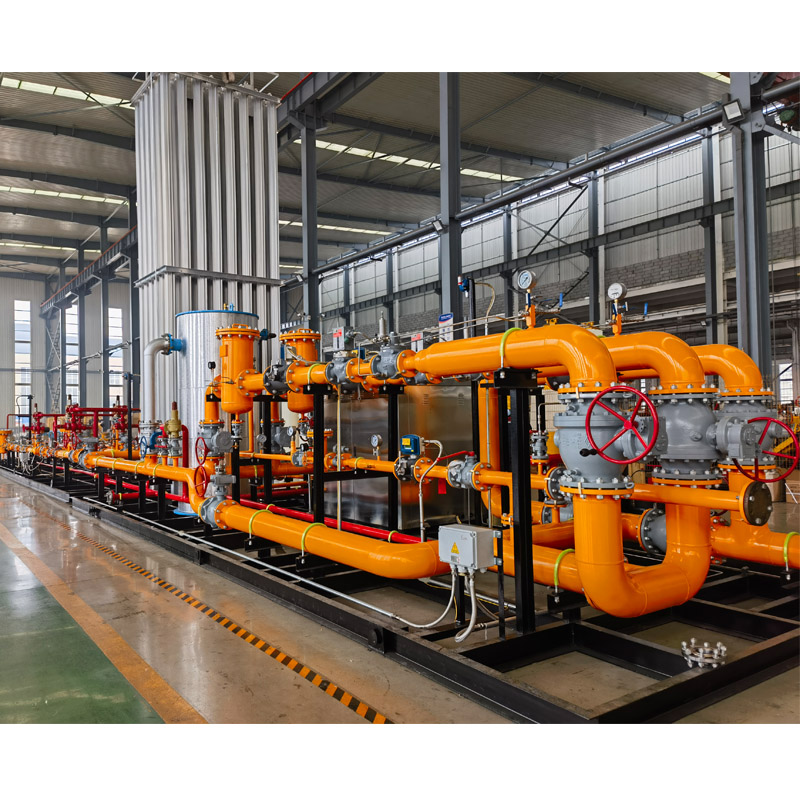
Oct . 13, 2024 19:05
Back to list
مبادل حراري للغاز
Understanding Heat Exchangers in Gas Systems
Heat exchangers play a vital role in many industrial processes, particularly in gas systems where they facilitate efficient heat transfer between two or more fluids. By enabling the exchange of thermal energy, they help improve energy efficiency, reduce operational costs, and minimize environmental impacts.
What is a Heat Exchanger?
A heat exchanger is a device designed to transfer heat between two or more fluids at different temperatures. These fluids may be in direct contact, but more commonly, they are separated by a solid wall to prevent mixing. The primary objective is to either cool or heat a fluid without the fluids mixing, making heat exchangers essential in many applications, particularly those involving gases.
Types of Heat Exchangers
There are several types of heat exchangers, each designed for specific applications and efficiency
1. Shell and Tube Heat Exchangers This design consists of a series of tubes, one set containing the hot fluid and the other containing the cold fluid. The heat transfer occurs through the walls of the tubes, providing a large surface area for efficient heat exchange.
2. Plate Heat Exchangers These consist of multiple thin plates stacked together, creating channels for fluids to flow. The large surface area and compact design make them highly efficient for gas applications.
3. Air Cooled Heat Exchangers Often used in power plants and refineries, these exchangers use air to cool a gas as it passes through. Fans or natural convection aids the cooling process by drawing air over the heat exchange surfaces.
4. Double-Pipe Heat Exchangers An older design, this type features one pipe inside another, with one fluid flowing through the inner pipe and another in the outer pipe. Although simpler in design, they are mostly used in small-scale applications due to their lower efficiency compared to other designs.
.
Heat exchangers have numerous applications in gas systems, including
مبادل حراري للغاز

- Natural Gas Processing In natural gas plants, heat exchangers help separate components by cooling and condensing gas streams, which is crucial for petrochemical production.
- Power Generation In power plants, heat exchangers are used to recover waste heat from gas turbines or internal combustion engines, improving the overall efficiency of electricity production.
- HVAC Systems Heating, ventilation, and air conditioning systems rely on heat exchangers to regulate temperature efficiently, ensuring comfort in buildings while minimizing energy consumption.
- Industrial Processes Various industries use heat exchangers in processes requiring temperature control, such as drying, chemical reactions, and heat recovery systems in manufacturing.
Benefits of Utilizing Heat Exchangers
1. Energy Efficiency By capturing and reusing heat that would otherwise be lost, heat exchangers significantly reduce energy costs and enhance overall system efficiency.
2. Environmental Impact Lowering energy consumption through effective heat exchange directly correlates with reduced emissions, leading to a smaller carbon footprint for industrial operations.
3. Operational Reliability Well-maintained heat exchangers improve the reliability of gas systems, as they prevent temperature fluctuations that might harm sensitive equipment or affect operational stability.
4. Cost Savings Reducing energy use leads to lower operational costs, making heat exchangers a financially savvy choice for businesses that rely on gas systems.
Conclusion
Heat exchangers are crucial components in gas systems, enabling efficient thermal energy transfer while offering numerous benefits ranging from cost savings to environmental protection. As industries strive for greater efficiency and sustainability, the role of heat exchangers will likely become even more prominent. Understanding their operation and applications is essential for engineers and operators who wish to optimize their systems and contribute to a greener, more efficient future.
Next:
Latest news
-
Safety Valve Spring-Loaded Design Overpressure ProtectionNewsJul.25,2025
-
Precision Voltage Regulator AC5 Accuracy Grade PerformanceNewsJul.25,2025
-
Natural Gas Pressure Regulating Skid Industrial Pipeline ApplicationsNewsJul.25,2025
-
Natural Gas Filter Stainless Steel Mesh Element DesignNewsJul.25,2025
-
Gas Pressure Regulator Valve Direct-Acting Spring-Loaded DesignNewsJul.25,2025
-
Decompression Equipment Multi-Stage Heat Exchange System DesignNewsJul.25,2025

